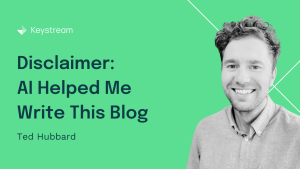08.10.2025
The Traitors Within: Tackling Hidden Inefficiencies in NHS Waiting List Management
As The Traitors returns to our screens tonight (highly recommend if you haven’t seen it), it’s a good reminder that not every challenge is visible at first glance – especially in healthcare. Just like in the show, NHS teams are working together towards a shared goal, but sometimes unseen forces quietly work against progress.
In the world of waiting list management, those “traitors” aren’t people.
On the demand side, they’re hidden inefficiencies, inconsistent data, and legacy systems that “sabotage” performance from within.
The NHS “Round Table” & hidden ‘Traitors’
Across the NHS, operational and analytics teams meet daily to review waiting list performance, monitor activity, and prioritise patients. But within those meetings, the real challenge isn’t identifying the right patients that need to be prioritised…it’s spotting the silent saboteurs in the data.
Poor data quality, siloed systems, and incomplete pathways can distort visibility of true demand, just as deception clouds judgement in the game.
Here are a few of the most common hidden “traitors” in waiting list management:
- Duplicate or outdated patient records – the “invisible players” that skew reporting and delay care.
- Unclear pathways and ownership – patients passed between services without accountability on if the patient should return, and when, or remain with the new service.
- Manual tracking systems – spreadsheets and offline lists that make true visibility impossible (yes, there are still offline spreadsheets in 2025…).
- Lack of interoperability – teams unable to share data effectively across systems and trusts.
Each of these quietly undermines efficiency and patient experience, just as a traitor would sabotage their team from within.
The Faithful: Collaboration and Data Intelligence
In any complex system, success depends on trust, teamwork, and evidence – not guesswork. The same applies to NHS waiting list management.
By using modern analytics tools like Power BI, data integration platforms, and predictive modelling, NHS teams can identify inefficiencies early and focus on what really matters: getting patients seen faster and improving outcomes.
By using modern analytics tools like Power BI, AI powered open-source technologies (something we at Keystream have been delivering with our clients), data integration platforms, and predictive modelling, NHS teams can identify inefficiencies early and focus on what really matters: getting patients seen faster and improving outcomes.
Keystream’s AI-powered, open-source technologies can help Trusts take this even further – harnessing intelligent automation, real-time insights, and interoperable data solutions that turn analytics into action across the whole patient pathway.
The ultimate goal is a single, patient-centric tracking list – one that provides a complete, event-driven view of every patient’s journey, no matter where they are in the system.
To get there, NHS organisations must first tackle data quality retrospectively, fixing inconsistencies, cleansing records, and validating waiting lists to ensure accuracy. But the real progress happens prospectively: ensuring that every new data point entered from this moment forward is correct and appropriate.
That’s where automation, interoperability, and workforce capability come together. Automated workflows can prevent duplication and human error, interoperable systems allow seamless data sharing across services, and, most importantly, well-trained staff ensure that technology is used as an enabler, not a barrier.
When all three align, teams can finally move beyond firefighting and start delivering a truly connected, patient-first approach.
The real “traitors” in waiting list management aren’t people – they’re hidden inefficiencies, inconsistent processes, and disconnected systems.
By building trust in data, aligning teams, and empowering staff with the right tools, NHS organisations can ensure that every patient’s journey is visible, accurate, and supported by timely insight.
So, as we all tune in tonight to see who the traitors are, it’s worth asking ourselves the same question – have we uncovered all the hidden saboteurs in our data?



